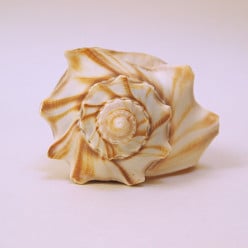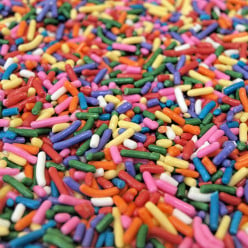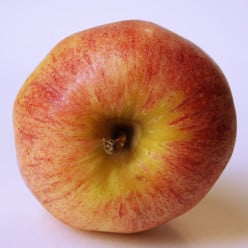What exactly are "spammy" elements?
The latest article I submitted didn't pass QAP because it contained "spammy elements." I'm really struggling with what that is because the only links in my articles are the sources I used. Do they want me to not cite my sources?
I'm just so confused and it's really discouraging that the hours of work I put into this article were not realized. Please help!
I read a help page that talked about promotional content but mine doesn't fit the bill so I'm just lost.It must be a mistake because links to references are not spam. What you might want to do is put those links in a Links capsule at the bottom of the article. Or you could email Hubpages.
Good evening. I looked at your article. I like it. You did a great job. It was difficult to concentrate because of the commas, conjunctions and hyphens. It took me a while to understand what it is going on. My advice to you. You need to read the rules of writing in this site . You will find it at hubpages learning center. You will find out what you did wrong. I found some punctuation mistakes. The other thing, you can do. You need to find someone who can proofread it for you. You have two run on sentences. Also you forgot a period before the question mark.
Hello miss. Day. I forgot to tell you. You have many apostrophes contractions. I wish you a fantastic weekend.
Good morning miss Erin C Day. I will take a look to your article after you added to the question. I need to read it to give you my answer. I am looking forward seeing it.
I just looked at your garlic article to understand what you are metioning. Why all the links? Does someone reading about garlic want to read all of those links?
If you want to add some references, you can add them as a link but to do so it is a good idea to add a references capsule at the bottom of the article. You can add the reference and make it a live link so that readers can jump to that article to read after they are finished reading your article.
You really need to add a link to the article you are concerned about. No one can give you definitive information without seeing the article that failed.Thanks for the insight. This was the article I was talking about: https://hubpages.com/health/Why-Garlic-is-Great
Yes, that is the article I looked at. It looks a lot better but you can make the sources in your referece capsules live links. Check my profile page and at the top is an article on jaundice home care in dogs; see the references capsule.
You are a good writer and I do not see any grammar issues but did want to point one thing out. You wrote "According to Phytochemicals, garlic contains..." It should be "According to the website Phytochemicals, garlic contains..." Do you really need to claim them as a source though? Arent there journal articles that are more trustworthy than what a website is writing? (Anyone can put anything they want on a website, then it is copied by someone who thinks it was true, etc. I think peer-reviewed journals are much better sources for lists like that. Also, when you are just using other websites as references it comes across as rehashed material, at least in my opinion. Plenty of people will disagree with me on this.)
Best of luck.
Thank you for your comments everyone. All the links are links to my sources but I will try putting them at the bottom in their own capsule.
It's entirely your choice whether you put the links in the text or at the end. If a link is "spammy", you'll still be penalised for it, whichever location it's in.
The best way to decide which to use is to ask yourself, "is this link just me citing my sources, or do I want the reader to go and read this page?" If it's just you citing your sources, put it at the end.
You need to make them live links, though, and don't just use the URL.
Spammy elements is an automated message triggered by multiple links to the same url, regardless of what that url is. The only exceptions being specifically exempted sites that are not as far as I know publicly shared anywhere obvious
You can have as many links as you like, they just all need to be to different urlsAdding a list of sources at the end is a good thing to do. Though just copying and pasting the URL's looks a bit messy and to be honest, a little amateurish. A better format is maybe using something like:
Garlic Found to Reduce Diabetes | BBC Health
Where "Garlic Found to Reduce Diabetes" is the text of the link.
I'm also not totally sure you need quite so many links either for what is a relatively short article. I would be inclined to go for somewhere between six and ten. Twelve seems like overkill to me.
Those are my thoughts, anyway.- Marisa Writesposted 5 years ago
0
The other point is that not all links are spammy. We're encouraged to use links in health-related articles, in fact.
The rule is that it's "legal" to link to a website if it is DIRECTLY relevant to the MAIN subject of your article. If not, it's spammy.
This can lead to silly situations. For instance, you might write a Hub about teddy bears and mention they're named after Theodore Roosevelt. Any sensible person would link to an article explaining who Roosevelt is - but on HubPages, that's not "legal", because your main subject is teddies, not American presidents.
I'm not sure which link has triggered the warning in your case. Perhaps the recipe, because your Hub is mostly about the health benefits of garlic.I think there are also some websites considered spammy/poor, so even if it is directly related to the subject matter, relevant to the main subject and title, it is still not okay to use.
I am not sure about all of them so can not provide a list. I know that last year (?) I was writing an article on defending your dog against attacks from other dogs. I linked to a pepper spray informational website and HP would not publish until I removed that spammy website.That's a very good point. I've had that problem, too. If the web page is too sales-oriented then HubPages seems to disapprove of it. Likewise if it's making big claims for a product.
It can be annoying because sometimes, I've linked to a genuine site with a good product and it still gets labelled as "spammy", like your pepper spray site. I usually give up and let it go, but I believe some people have been able to get it accepted if they email the team.I think that site was very sales oriented,so maybe that was the problem. It was the only source for that info though, and unfortunately I just ended up dropping it.
Hi. I noticed one point in your article that's not related to spammy links but that you should consider changing. You say that garlic destroys brain tumors. I checked the reference that you provided and also followed the link in that article. The researchers discovered that garlic caused the death of human glioblastoma cells in a cell culture. They didn't discover that it destroys a tumor within the brain. We need to be very careful with our wording when we write about health.
Suggesting to readers that they might like to pin an article if they consider it helpful is considered spammy according to editors.
Okay I don't recall doing that but I will go back and revise. Thank you
Look at your account page. I think this article is now featured.
Related Discussions
- 17
Exactly what is meant by 'overly promotional'?
by Carolan Ross 4 years ago
I've been editing and editing, removed nearly all links on a hub, only 2 remain except a couple that link back to Hubpages. Still getting that 'overly promotional' flag. So what now? Must I remove all links to get out of the 'overly promotional' jail? I will if need be, just...
- 27
"Sponsored LINK, MB, ARTICLE" spam email acting as blackhat inducement
by Will Apse 7 years ago
Got the following email asking me to provide a link on one of my articles:"Sponsored LINK, MB, ARTICLEInboxxDebora Willson (via HubPages) via amazonses.com 1:45 AM (8 hours ago)to meDebora Willson (debora.willson95@gmail.com) DEBwill on HubPages has sent you this message.(email address...
- 49
Guest Blogging to improve traffic
by Kate Swanson 8 years ago
I am always surprised that guest blogging is never discussed on HubPages. We all know it's important to have backlinks pointing to our Hubs and websites. We also know that Google is working hard to detect and devalue links which are artificially created - things like directory...
- 35
Advice On Adding Sources To A Hub Please?
by Alison Graham 8 years ago
I received an email from HubPages about a recently published Hub, suggesting some changes that might mean it could be moved to Healdove.One of the suggestions was as follows:"Can you add some sources to support your information? You can create a "sources" section at the end of your...
- 52
How can we bring our Hubpages traffic back to what it was?
by Glenda Goddard 11 years ago
Is there a way to restore our traffic after this Panda update?
- 10
Article submitted to Soapboxie was denied how should I edit it?
by Cholee Clay 8 years ago
The email I recieved is all about link issues. I have reread the article about half a dozen times now and I can't find any links. I found minor spelling and grammar errors, which were not changed or addressed that I fixed; but for the life of me I can't find anything else wrong with the article....














